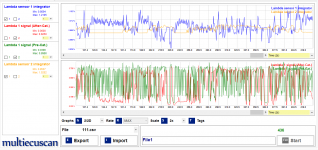OK, assuming that throttle is nice and clean, judging from previous posts and butterfly is not sticking, I would again suggest a vacuum leak test. There are 2 rather different types of vacuum leak. If it is only misbehaving at cold and gets better when engine is warm, it is likely intake manifold gasket leak (motivation: When engine warms up, metal and gasket are expanding and close down the leak). If it is the same on both cold and warm, it is likely a leak in a manifold or somewhere else.
As said, take a spray bottle full of water, run the engine and listen for it to start sucking the water in. In some cases, it might affect the idle as well when water gets into cylinders. One word of advice, if there is a severe leak somewhere, don't drop too much water, as you are risking flooding the engine and getting it hydrolocked (pro mechanics say that there is no risk of that, but I would be careful). Another way is to use propane, but it is a dangerous thing, so I don't recommend that way.


